 Marine-Fliegerabteilung: 118 manufactured 1916-1917. In service until November 1918
Marine-Fliegerabteilung: 118 manufactured 1916-1917. In service until November 1918The Albatros W.4 was a military floatplane designed and produced by the German aircraft manufacturer Albatros Flugzeugwerke. The W.4 was a derivative of the Albatros D.I land-based fighter aircraft, furnished with a new wing and tail section of greater span than the D.I. It was powered by the same 120 kW (160 hp) Mercedes D.III engine as fitted to the D.I while its fuselage was also based upon its predecessor. The first production series W.4s were armed with one lMG08 7.92 mm (.312 in) machine gun, while later built aircraft carried two guns. While early production aircraft were equipped with ailerons only on the upper wings, those built later on had ailerons on all four wings instead. Performing its maiden flight during 1916, a total of three prototypes were produced. The W.4 was first used in combat in September 1916; it would be operated in both the North Sea and the Baltic Sea. The final aircraft was delivered in December 1917. It was displaced from frontline duties by newer twin-seat floatplanes.
About Albatros Flugzeugwerke

Captured Albatros V, colorized photo
The company was founded in 1909 in Johannisthal, Germany by Enno Walther Huth. It soon was specialized in the design and manufacture of military aircraft, primarily for the German Air Service during WWI. Merged into other firms post-WWI as part of restrictions placed on German military aviation by the Treaty of Versailles. Albatros became best known for its line of fighter planes, which were among the most advanced of their time:
Albatros D.I – D.Va series (1916–1918) was famous for its Streamlined wooden fuselage (monocoque design) — very modern for the era, conpounded by its Inline water-cooled engines. It had a good speed and climb rate, the D.III and D.V models were especially popular. Notable Pilots: Manfred von Richthofen (the “Red Baron”) flew an Albatros D.III and D.V at various points in his career.
The C-series were two-seater reconnaissance aircrafts, B-series were early unarmed observation aircraft. Albatros helped define German aerial strategy during WWI. Their fighters, while eventually surpassed by newer designs like the Fokker D.VII, were mainstays on the Western Front. Their innovations in aerodynamics and aircraft construction had lasting effects on aircraft design.
Development of the W.4
In view of the growing threat of air attacks on its bases, the Imperial German Navy drew up specifications for the development of a single-seat fighter. In May-June 1916, the Marine-Fliegerabteilung asked for a modern seaplane fighter capable of defending its naval bases, more efficient than its usual models. Albatros, Friedrichshafen, Hansa-Brandenburg, Lubeck-Travemunde, Riolmand, Rumpler and Sablatnig (LVG) were all contacted to deliver proposals. On May, 16, the Navy ordered the shortlisted Albatros, ordered three W4 prototypes under marine numbers 747, 785, 786. They arrived at the Seeflugzeug VersuchsKommando in Warnemunde for testing evaluation and seaworthines trials.
It was logical for the company based on Müggelsee near Berlin to develop this aircraft from the most modern land-based fighter available at the time, the Albatros D.I. prototype. It was however substantially larger and heavier. Not an immediate success, it asked for many moths of further testings in all sea conditions, and correcting all the listed shortcomings. After all, the original fuselage and strcuture never had been tested for a salty water environment, and lost of potentially corrosive salt was expected to be sprayed over the entire seaplane while in service, especially rough in the North sea.
The final prototype was ordered on June 8, 1916 delivered to the SVK on August, 28, 1916 as number 747. It was returned to the factory to install new floats; These were longer and had however the same rear sloping down ends. It was returned ton 23 September, accepted on the 29th, but the pilot still noted it was very tail heavy. It was decided to change de degree of stagger on the prototype 786 delivered in December 1916. Climb rate and top speed were however boosted in between. There was also a net improvement in handling qualities. The 747 trials were good enough for the Navy to rdere a preproduction batch on Sepember 5, 1916 for 10 fighters, 9 delivered in February 1917.
Among other differences, the distance between the upper wing and fuselage was increased, wingspan extended by one meter. The prototype 747 after being accepted on September 29 was sent in Zeebruge to be battle tested, followed by two more, numbered 911 and 949, fiorst of the new batch in February 1917. 911 was ordered on September 5, 1916, delivered on February 16, 1917, accepted on March 28, 1917. 949 was ordered on October 6, 1916, delivered on February 25, 1917, and accepted on March 28, 1917.
Tests in 1917 on the frontline showed pounding stress loads on the floats, struts, and i fact they were notable for a “very short float life”. Careful inspections were required every day. In July 1917, complains piles up on these until the floats were redesigned and strenghtened, making for a new variety of shapes, notably the late “poop tail” variant. They were not “optimized for the best take off performances” as claimed by some authors postwar. The veneer leading edge and lower wing spare delaminated due to moisture intrusion and needed fixes. By April 1917, the wings were often returned to the factory to received a proper waterpoofing. Albatros teams worked day and night on these, for full replacement of all models delvered all along 1917, applying new recipes on the ones still in production. It was discovered also the the Cellon centre section panel tended to shred in the slipstream and replacement by fabric ordered in May 1917. In summer the radiators tended to boil-off water, so new ones were tested.
In August 1917, from the 5th batch numbered 1484-1513, aerofoil radiators were fitted and modifications before operational clearance. In June 1917, evaluation against the Brandenburg KDW showed the W4 was far superior in all departments, with a poor cockpit. The W4 in addition had far better, superb handling and superior climb rate. Skilled naval pilots trained at the single seater school at Valenciennes reported the KDW vastly inferior as a naval fighter to the W4. %eanwhile airframe improvements continued, and shorter float struts were introduced by July 1917 from #1318 onwards, englarges ailerons, increased lower wing dihedral improving agility. Ailerons were added on the top and botom wings, an for structural strenght, from #1484 in July 18, 1917, marked improvements were noted. 1495 was also well tested in hard turns and modified for the final batch.
On the 118 W4s ever produced, the majority, 91, were accepted between July and December 1917 though. So this really was not the most late war naval fighter, and in between the Kaiserliched Navy learned to prefer two -seaters such as the Friedrichsafen F33 which were mre versatile overall. It had more advantages, notably in terms of navigation and self-defence, but especially range. Air-to-air encounters, apart in some sectors such as Zeebruge and Oostende, were not that common.
Design of the W.4 Conversion

The W4 was a repeat of the D1 with all its qualities, but fitted with floats. It proved to be highly maneuverable, offering the pilot good visibility. Floats had to be reinforced, streamlined, and rebraced, and their tail end changed of shape completely, one of the sure way to distinguish early and later batches with the colors and engine. The wings were well protected against moisture, with the Windhoff radiators modified, then relocated. The cockpit was made smaller, but it was adored by naval pilots and even judged better than the Rumpler 6B1 when deployed in the North and Baltic Seas.
The W.4 was otherwise really the close copy as the D.I, but with floats, apart the size of the wings to not loose too much lift with the veaier, bulkier floats. As derivatives from existing land-based fighter aircraft, it was overall considerably larger and notably ahd a larger tail section, lacking an under-fin. The fuselage shared the same basic structural elements of longerons and forms covered by plywood. Steel was also used extensively in the structure of the tail unit, as well as bracing struts and framework of the elevator and rudder. The wing structure used elongated and strengthened centre-section steel struts to accommodate the greater span.

Early aircraft had inversely tapered ailerons on the upper wings only, but this was criticized for slow lateral control. Latter batches had a revised arrangement using ailerons on all four wings, interlinked using a steel strut. The W.4 was outfitted with a variety of different floats, featuring notably single-step, double-step, flat top, curved top and had a steel chassis to support their attachment to tth fuselage, along with wire bracing. Two separate fuel tanks, holding 73 litres each enabled an excellent endurance for a small size. But the biggest issue was more of operations, if used in reconnaissance, as the pilot alone had a hard time using navigation at sea, especially out of any visible shore.



General design

Users
 German Empire:
German Empire:
Luftstreitkräfte: 118 aircraft.
 Austria-Hungary:
Austria-Hungary:
KuKLFT 8 aircraft delivered in July 1918.
⚙ specifications |
|
| Length: | 8.5 m (27 ft 11 in) |
| Height: | 3.65 m (12 ft) |
| Wingspan: | 9.5 m (31 ft 2 in) |
| Wing area: | 31.6 m2 (340 sq ft) |
| Empty weight: | 790 kg (1,742 lb) |
| Gross weight: | c1070 kg (2,360 Ib) |
| Powerplant: | Mercedes D.III 6-cyl. wc in-line piston engine, 120 kW (160 hp) |
| Propeller: | 2-bladed fixed-pitch wooden propeller |
| Maximum speed: | 158–160 km/h (98–99 mph, 85–86 kn) |
| Cruise speed: | ? |
| Ceiling: | 2,890 m (9,480 ft) |
| Range: | 450 km (279 miles) |
| Endurance: | 3 hours |
| Time to altitude: | 1,000 m (3,300 ft) in five minutes |
| Crew | 1 pilot |
| Armament | 1/2× fws-firing 7.92 mm (.312 in) lMG 08 |
Combat Use

The first ten entered service between February and April 1917, follwoed by 902–911, 948–967, 1107–1116, 302–1326, 1484–1503, and 1719–1738. By December 1917 the last of 118 was delivered, and by June 1918, 60 were reported in front-line service, 24 served in various coastal air stations. Eight were sold to the Austrian Navy, to defend the Pola naval base from July 1918. The most “exotic” was the German naval aviation in the Aegean Sea, operating W.4s from Turkey. On November, 67 were listed “in service”.
During September 1916, the W.4 commenced combat operations. A total of 118 aircraft, including three prototypes, were built between June 1916 and December 1917. It was operated both in the North Sea and the Baltic Sea; it proved to be both relatively fast and agile for a floatplane. The W.4 typically had the upper hand over most enemy seaplanes encountered, particularly in terms of armament, unless the aircraft came up against the heavier flying boats operated by the Royal Navy.
However there were not that many such encounters. Most came from the Baltic sea, where these were sparce. The RNAS reported in December 1918 and reported stauchj defence on bases by Albatros and Rumplers, but endurance was recoignised as very short, so these models were limited to point defence, not reconnaissance.

The W4 was ultimately eclipsed by the arrival of faster twin-seat floatplanes from Hansa-Brandenburg. In mid-1918, the W.4 was was relegated in a trainer role. In fact the last batch, 1719-1739, was sent directly to storage, and by July 1918, eight were sold to the Austro-Hungarians, in return for Austro-Daimler V12 engines for E5-E12 Staaken bombers. In 1918 naval pilots preferred the new Riumpler 6B1 and 6B2s, now superior propositions. There were still 89 W4 listed in inventory by August 1918. Indeed only 21 were written off, very few for a naval fighter, and only nine were in active combat stations, 4 in the north sea, 4 in the black sea, based in Turley, 56 in storage, the remainder in training in baltic stations or under repair.
Profiles

From hidroavion de caza Albatros W.4 (scribd, see below)
This shows the variations of color patterns. The original 1916 livery was for the fuselage to be unpainted, with the wood protected, but kept as it, as well as the wings, with their original doped canvas livery. This showed the tail’s forward part was in wood, and the rudder in framed wood, covered. Of course apart the identifications numbers painted in low vibility on the fuselage they had either fuselage’s crosses and tails crosses of just tail crosses and in all cases, underwings, overwings crosses. In mi-1917, up to the end of the December when production stopped, the fuselage was now painted, like the wings, in overall medium grey, on Navy specifications. The underbelly was painted in Methuen 23B1/FS26493 or light grey, the fuselage sides in plain light grey blue Methuen 19C2, as the floats, but overall surfaces, wings, fuselage top, rudder, float tops, received a composite camouflage in the late 1917 and 1918 typical lozenge pattern of that era, adapted to marine conditions, mising hexagons in light blue, grey, dark blue and/or dark grey, either 3 or 4 tones, in printed fabric.

Albatros W4 Prototype

“Möwe”, improvized camouflaged protoype, Seeflugstation Zeebruge Obst.sZ. Friedrich Christiansen 1917

W4 Lt. Schulz

Late Type

W4, Last Batch
Gallery




Read More/Src

Books

Grey, Peter; Thetford, Owen (1970). German Aircraft of the First World War (Second ed.). London, UK: Putnam.
Grosz, Peter M. (1995). Albatros W4: Windsock Mini Datafile No. 1. Berkhamsted, Germany: Albatros Productions.
Green, W.; Swanborough, G. (1994). The Complete Book of Fighters. London, UK: Salamander Books.
Herris, Jack (2017). Albatros Aircraft of WWI: A Centennial Perspective on Great War Airplanes: Vol. 3: Bombers, Seaplanes, J-Types. Vol. 26.
Herris, Jack (2012). German Seaplane Fighters of WWI: A Centennial Perspective on Great War Seaplanes. Vol. 2.
Taylor, Michael J. H. (1989). Jane’s Encyclopedia of Aviation. London, UK: Studio Editions.
Links
fr.scribd.com
historyofwar.org
forum.ww1aircraftmodels.com
aircraftinvestigation.info
flyingmachines.ru/
en.wikipedia.org
web.archive.org luftfahrt-archiv.de

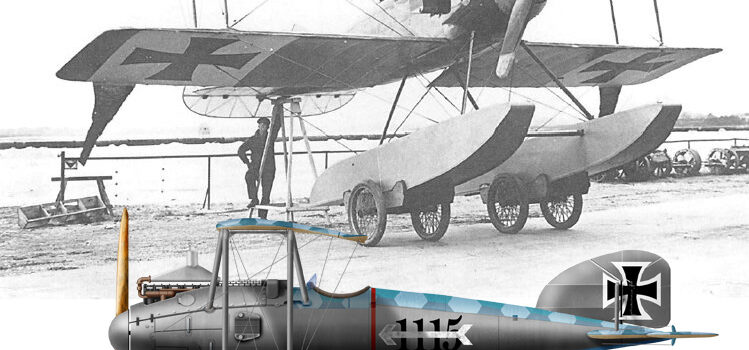

 Latest Facebook Entry -
Latest Facebook Entry -  X(Tweeter) Naval Encyclopedia's deck archive
X(Tweeter) Naval Encyclopedia's deck archive Instagram (@navalencyc)
Instagram (@navalencyc)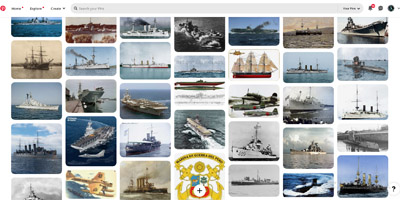

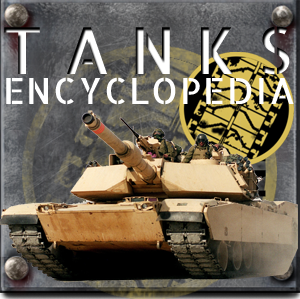
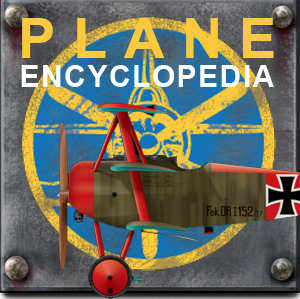
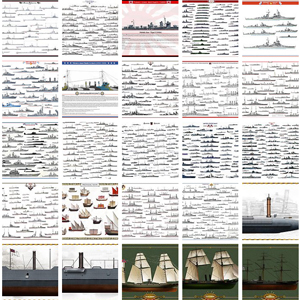
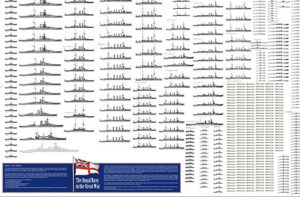
 French Navy
French Navy Royal Navy
Royal Navy Russian Navy
Russian Navy Armada Espanola
Armada Espanola Austrian Navy
Austrian Navy K.u.K. Kriegsmarine
K.u.K. Kriegsmarine Dansk Marine
Dansk Marine Nautiko Hellenon
Nautiko Hellenon Koninklije Marine 1870
Koninklije Marine 1870 Marinha do Brasil
Marinha do Brasil Osmanlı Donanması
Osmanlı Donanması Marina Do Peru
Marina Do Peru Marinha do Portugal
Marinha do Portugal Regia Marina 1870
Regia Marina 1870 Nihhon Kaigun 1870
Nihhon Kaigun 1870 Preußische Marine 1870
Preußische Marine 1870 Russkiy Flot 1870
Russkiy Flot 1870 Svenska marinen
Svenska marinen Søværnet
Søværnet Union Navy
Union Navy Confederate Navy
Confederate Navy Armada de Argentina
Armada de Argentina Imperial Chinese Navy
Imperial Chinese Navy Marinha do Portugal
Marinha do Portugal Mexico
Mexico Kaiserliche Marine
Kaiserliche Marine 1898 US Navy
1898 US Navy Sovietskiy Flot
Sovietskiy Flot Royal Canadian Navy
Royal Canadian Navy Royal Australian Navy
Royal Australian Navy RNZN Fleet
RNZN Fleet Chinese Navy 1937
Chinese Navy 1937 Kriegsmarine
Kriegsmarine Chilean Navy
Chilean Navy Danish Navy
Danish Navy Finnish Navy
Finnish Navy Hellenic Navy
Hellenic Navy Polish Navy
Polish Navy Romanian Navy
Romanian Navy Turkish Navy
Turkish Navy Royal Yugoslav Navy
Royal Yugoslav Navy Royal Thai Navy
Royal Thai Navy Minor Navies
Minor Navies Albania
Albania Austria
Austria Belgium
Belgium Columbia
Columbia Costa Rica
Costa Rica Cuba
Cuba Czechoslovakia
Czechoslovakia Dominican Republic
Dominican Republic Haiti
Haiti Hungary
Hungary Honduras
Honduras Estonia
Estonia Iceland
Iceland Eire
Eire Equador
Equador Iran
Iran Iraq
Iraq Latvia
Latvia Liberia
Liberia Lithuania
Lithuania Mandchukuo
Mandchukuo Morocco
Morocco Nicaragua
Nicaragua Persia
Persia San Salvador
San Salvador Sarawak
Sarawak Uruguay
Uruguay Venezuela
Venezuela Zanzibar
Zanzibar Warsaw Pact Navies
Warsaw Pact Navies Bulgaria
Bulgaria Hungary
Hungary

 Bundesmarine
Bundesmarine Dutch Navy
Dutch Navy Hellenic Navy
Hellenic Navy Marina Militare
Marina Militare Yugoslav Navy
Yugoslav Navy Chinese Navy
Chinese Navy Indian Navy
Indian Navy Indonesian Navy
Indonesian Navy JMSDF
JMSDF North Korean Navy
North Korean Navy Pakistani Navy
Pakistani Navy Philippines Navy
Philippines Navy ROKN
ROKN Rep. of Singapore Navy
Rep. of Singapore Navy Taiwanese Navy
Taiwanese Navy IDF Navy
IDF Navy Saudi Navy
Saudi Navy Royal New Zealand Navy
Royal New Zealand Navy Egyptian Navy
Egyptian Navy South African Navy
South African Navy






























 Ukrainian Navy
Ukrainian Navy dbodesign
dbodesign